« What You Can Expect From the 2020 Nissan Kicks
The 2020 Nissan Rogue Sport Delivers a Bold Design With Matching Performance »
Jun 15, 2020
Do you need new tires? Are you unsure? There is an extremely simple way to check your tire tread depth at home with no special tools! All you need is a quarter and a penny to get started.
Before using the coin, you check your tires for the “wear indicators” as seen in the video above. Look for these rubber notches between the tread of your tires. They are raised to 2/32 of an inch and will tell you when your tires are completely worn to an unsafe level. Once the indicator is flush with the tread, that means it’s time to replace your tires right away.
If your tires do not have these indicators, or if you want to be proactive and get an idea of how much tread you have left before it’s too late, it’s time to use your coins. First, grab your quarter. Insert it in the space between your tire tread, with George Washington’s head facing down. If your tread surpasses the top his head, you are above 4/32 of an inch and are in good shape. Once the tread comes flush with the top of Washington’s head, that means you are at 4/32 of an inch. While still safe, it’s time to start planning ahead. Depending on how much you drive and on what terrain, you’ll need to replace your tires soon.
If you find that your tread is not even touching Washington’s head, you can grab your penny. Insert the penny in the same way, with Lincoln’s head facing down. When your tread is flush with the top of Lincoln’s head that means you are at 2/32 of an inch. As with the wear indicator, this means it’s time to replace your tires. Regardless of season, low tread is unsafe, reducing traction, increasing stopping distance and increasing chances of getting a flat.
Make sure you check your tread on all four tires and in more than one spot. If you find that the center of your tires is wearing more than the outer edges, your tire is likely over inflated. On the other hand, if the edges are wearing more quickly than the center, your tires are likely under inflated. When certain tires are wear more quickly than others, you might need a tire rotation or alignment. In this case, we’d be happy to help you figure out what needs done to ensure even wear to not only increase the lifespan of your tires, but also keep you driving safely!
If you do need new tires, take advantage of our $70 rebate on a set of four eligible tires though July 31, 2020! Start shopping new tires here.
Tags: Colorado, Longmont, new tires, Nissan, tire tread, tires, tread depth
Posted in
Longmont Nissan Service |
No Comments »
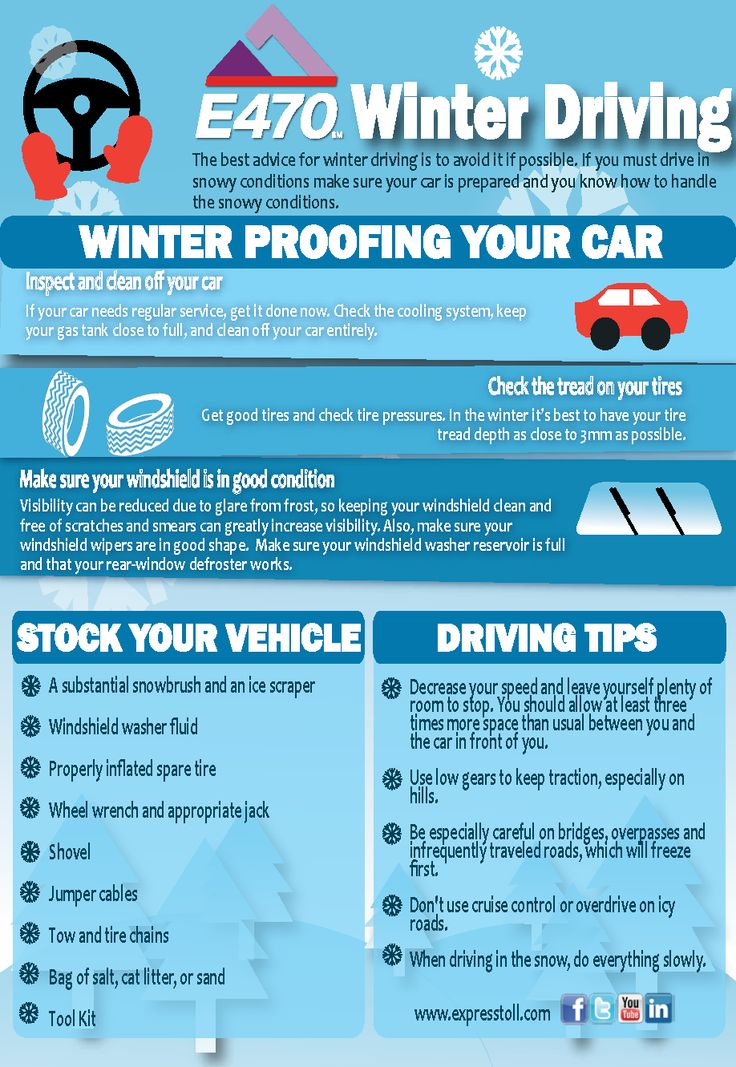 , Longmont, CO 80501 | Sales: 303-586-2862 | Contact Us | Privacy | Sitemap | NissanUSA.com
, Longmont, CO 80501 | Sales: 303-586-2862 | Contact Us | Privacy | Sitemap | NissanUSA.com
When it comes to checking tire tread, there are a number of methods that can help you know if it’s time to replace a tire. Heavily worn tread will prevent a tire from performing as designed and can lead to unsafe driving conditions. One of the simplest, most common ways to check tread depth requires nothing more than a penny and a few moments of your time.
In the United States, tire tread depth is measured in 32nds of an inch. New tires typically come with 10/32” or 11/32” tread depths, and some truck, SUV and winter tires may have deeper tread depths than other models. The U.S. Department of Transportation recommends replacing tires when they reach 2/32”, and many states legally require tires to be replaced at this depth.
The idea of the penny test is to check whether you’ve hit the 2/32” threshold. Here’s how it works:
Here’s how it works:
Place a penny between the tread ribs on your tire. A “rib” refers to the raised portion of tread that spans the circumference of your tire. Tire tread is composed of several ribs.
Turn the penny so that Lincoln’s head points down into the tread.
See if the top of his head disappears between the ribs. If it does, your tread is still above 2/32” , If you can see his entire head, it may be time to replace the tire because your tread is no longer deep enough.
When performing the penny tire test, remember not only to check each tire, but to check various places around each tire. Pay special attention to areas that look the most worn. Even if parts of your tread are deeper than 2/32”, you should still replace the tire when any areas fail the penny test.
Consistent wear around the whole tire is normal, but uneven tread wear could be a sign of improper inflation, wheel misalignment, or a variety of other things. If you see uneven tread wear, you should have a technician inspect your vehicle.
A simple way to check your tire tread depth is by using a tread depth gauge. You can find tire tread depth gauges at your local auto parts store. There are many models available, but an inexpensive simple graduated probe gauge will work just fine. All you have to do is stick the probe into a groove in the tread and press the shoulders of the probe flat against the tread block and read the result. All gauges should measure in both 32nds of an inch and millimeters.
Another indicator of worn out tread already lives in your tires themselves. Every performance, light truck, or medium commercial tire comes equipped with indicator bars (or wear bars) embedded between the tread ribs at 2/32”. They’re there to help you monitor tread depth and make decisions about tire replacement. Just look to see if the tread is flush with the indicator bars. If they are, it’s time to replace the tire.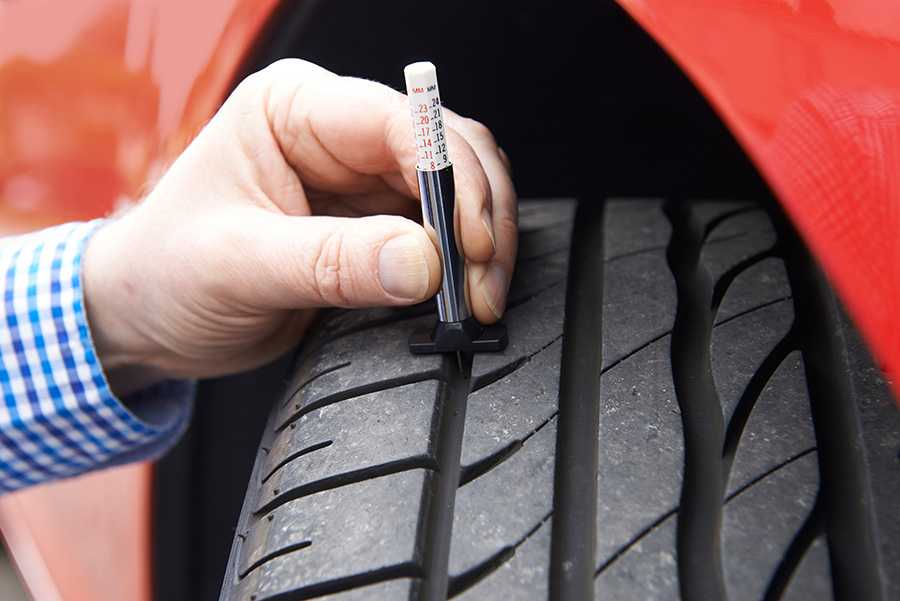
While the penny tire test does deliver on what it promises – indicating whether tread has reached the legal limit – it may not be the best indicator of whether your tires are safe for the road. Tire performance can diminish significantly before your tread hits 2/32”. Even though the law deems fit for safe driving may not prevent you from hydroplaning or losing control in rainy, slushy conditions. If you think your tires may be close to needing replacement, have them checked out by a licensed mechanic.
The tread is a very important structural part of the tire, which indirectly and directly affects the safety of your trip. In order to be sure of your rubber, you will have to measure the residual tread depth a couple of times a season.
In order to determine the exact remaining tread in millimeters, you can use one of several measurement options. The easiest and most affordable option for everyone is to check the tread depth using wear indicators.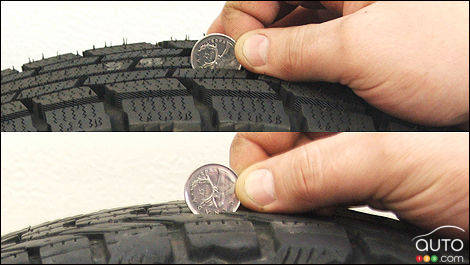 nine0003
nine0003
This method of measuring the remaining tread depth is accurate and simple, and most importantly, in this way any car enthusiast can find out the remaining tread of his tire.
Tire manufacturers implement several indicator options: numeric and ribs. They have the same meaning and principle.
(example of wear indicators)
1) numerical wear indicator
of a numerical indicator of wear- these are different depths of the number on the tire itself. As the rubber wears, the numbers themselves disappear, showing you the remaining tread depth in millimeters. nine0003
As a rule, a numerical wear indicator is located on the tire tread. Looking at the tread, you will notice numbers arranged in a row, from 1 to 8. The last number is your tread depth in millimeters.
2) Rib wear indicator
The ribs as a wear indicator have the same principle as the numeric one, with one exception, they indicate the critical point in wheel wear at which the tire needs to be replaced to a new one. nine0003
nine0003
If your tire wear indicator is on the same level as the tread, then it's time to change the tire.
(Examples of wear indicators)
3) Special gauges for measuring tread depth
If you have some mistrust of wear indicators on the tires themselves, then we hasten to please you. You can measure the tread height of your tire using specialized devices. These devices include the “tread gauge” and “caliper”. nine0003
These devices are either mechanical or electronic. However, there is no fundamental difference in the measurement algorithm or their accuracy.
(Electronic Tread Depth Gauge)
Anyone can measure the tread depth of your wheel with these devices. Below is a brief measurement algorithm.
The measuring part must be placed on the deepest point of the tread channel and the device will show you the residual part of the projector in millimeters.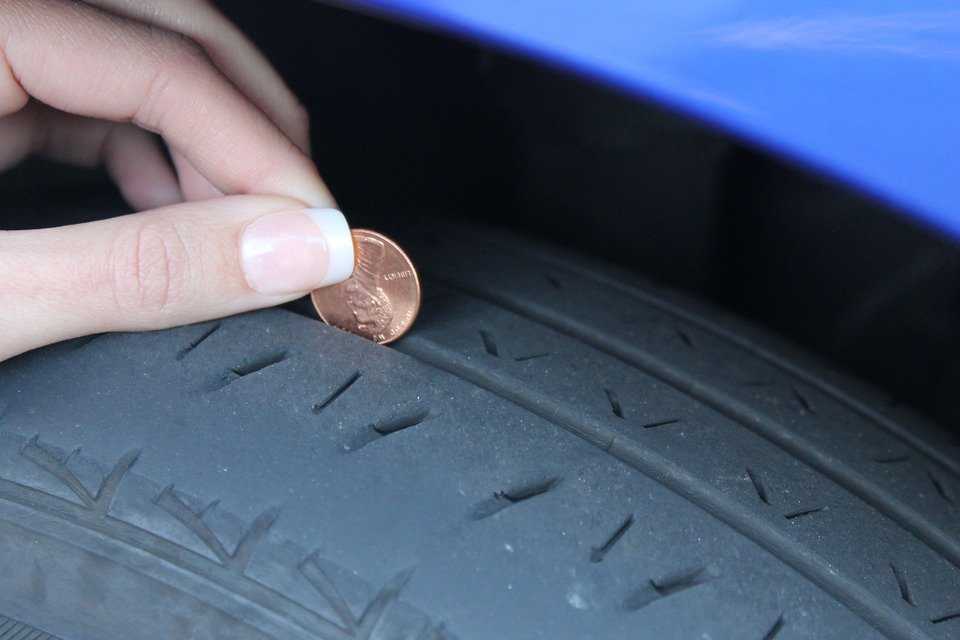 For a better understanding of the condition of the wheel, you will have to do this procedure in several places on the tire. This is necessary because the tire, in some cases, may wear unevenly. nine0003
For a better understanding of the condition of the wheel, you will have to do this procedure in several places on the tire. This is necessary because the tire, in some cases, may wear unevenly. nine0003
How to evaluate tread wear?
You have taken the necessary measurements and know the remaining tread depth in millimeters. At what numbers can you drive further, and at what time is it time to change a tire?
For passenger car tires, a tread depth of 2 mm is considered safe. If your tire's tread depth is less than 2mm, then it's time to change your tires. (The “rib” wear indicator also measures 2 millimeters)
Please note that these figures are not recommendations. A tire with a tread depth of less than 2 millimeters loses stability on the road due to poor grip and water drainage.
(Table showing how the grip of a tire with different tread depth changes with increasing speed)
How to check the tread depth of a tire with a coin?
If it so happens that you don't have any measuring device at hand, then you should use the wear indicators on the tires themselves.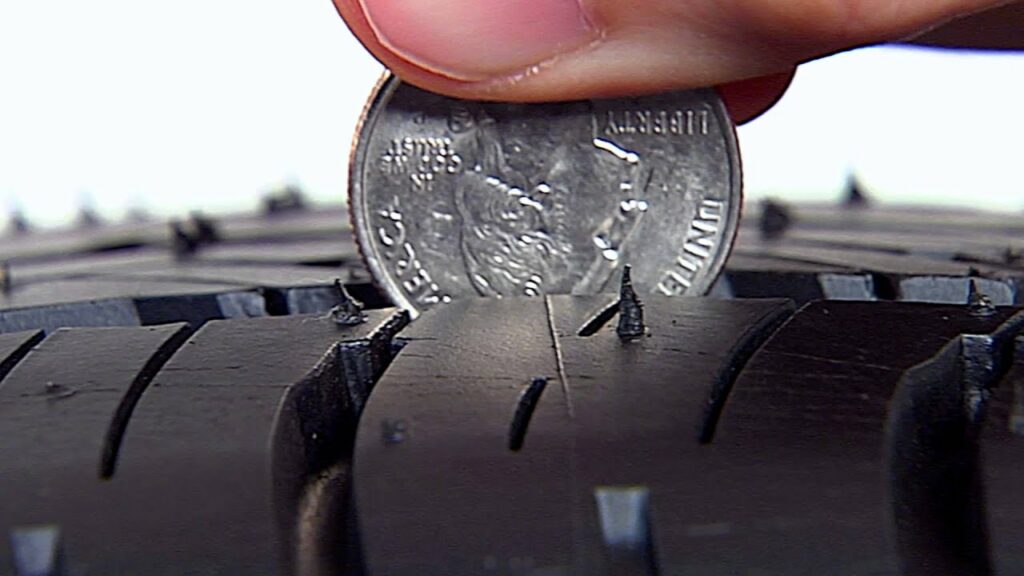 The coin trick is too imprecise a measurement. And wear indicators are present on the tires of any automaker. Measuring the tread depth with a wear indicator is preferable and more accurate than measuring with a coin. nine0003
The coin trick is too imprecise a measurement. And wear indicators are present on the tires of any automaker. Measuring the tread depth with a wear indicator is preferable and more accurate than measuring with a coin. nine0003
From the same kind of myths as measuring the tread with a coin - “How to deepen the tread on a car tire?”. Safe, unfortunately not.
If your tire already has a wear indicator, then the remaining depth of the rubber coating to the cord is very small. It is impossible to drive safely on such a tire, and if you try to cut the tread, the tire will become unusable.
Total
As already mentioned above, monitoring the tread of your tires is an important feature of the safe operation of the car. Checking your tires for residual tread depth doesn't take long, but it can save you from a serious road traction accident. Fortunately, automakers help us monitor the wear process by installing wear indicators on their tires, which makes it much easier to check them for remaining tread depth. If you do not want to control the tread depth of your tires yourself, you can always visit a specialized service station, where mechanics will help you with all measurements. Safe roads for you
If you do not want to control the tread depth of your tires yourself, you can always visit a specialized service station, where mechanics will help you with all measurements. Safe roads for you
The tire tread is the outer part of the wheel that provides traction in all weather conditions. The protectors inevitably wear out during the operation of the car, the working height of the slope decreases. The residual tread depth should be periodically monitored and the set of tires should be renewed in time - this will reduce the risk of losing control of the car and save the car owner from fines from the traffic police.
Tread wear rate depends on many factors:
Measuring the thickness of the tread layer will allow you to accurately determine the degree of tire wear and make a decision in time to replace them with new ones.
Different tires have different wear limits. Tread depth affects vehicle handling and road safety.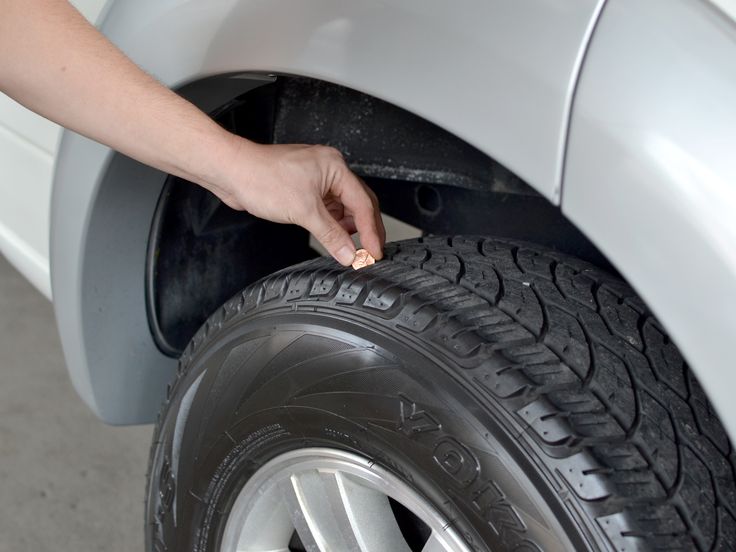
| According to Chapter 5 of the SDA, limiting norms for the height of the tread pattern have been established. For category M1 - passenger cars - as well as vehicles of categories N1, O1 and O2, the minimum allowable value is 1.6 mm. When using winter tires on snowy or icy surfaces - the limit is 4 mm. nine0003 |
Let us explain what categories of vehicles we are talking about:
N1 - vehicles intended for the carriage of goods, having a technically permissible maximum mass of not more than 3.5 tons;
O1 - trailers, the technically permissible maximum mass of which is not more than 0.75 tons;
O2 - trailers, the technically permissible maximum weight of which is over 0.75 tons, but not more than 3.5 tons. nine0003
The traffic police officer has the right to measure the residual depth with a verified device.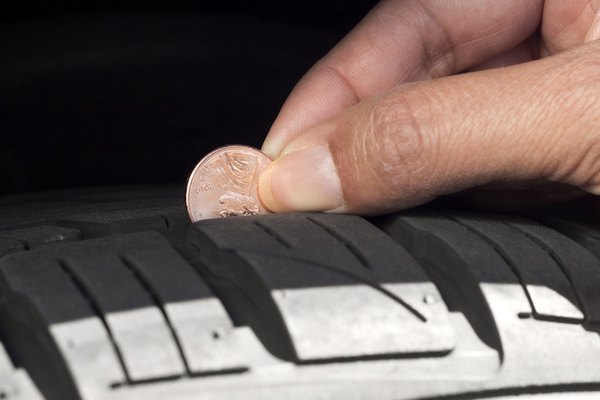 In case of a recorded violation, a fine is imposed on the car owner.
In case of a recorded violation, a fine is imposed on the car owner.
The new summer tire has an average tread depth of 7-8 mm. The service life of summer tires is usually 3-5 seasons with average mileage and moderate driving style.
| Residual height limitation by law is 1.6 mm. However, with a remaining outer layer of 3 mm, the machine is already difficult to control, grip deteriorates, and a safety hazard arises. nine0003 |
Do not wait until the critical value is reached. Make sure you change tires in advance.
Winter tires are used in severe weather conditions: low temperatures, icy conditions, on snowy road surfaces. Worn elements make the tire ineffective on slippery winter roads. Accordingly, a more serious approach to the condition of the tire tread is needed.
Non-studded friction tire (Velcro) with a tread depth of 8-9mm. A new studded model - from 9 to 11 mm, some firms produce a tread with a height of 12-18 mm.
| If the tread wear is up to 4-5 mm, the winter set of tires needs to be replaced. In addition, the loss of more than 50% of the metal spikes is also a reason to change the car's shoes. |
The average life of winter tires is 2-4 years.
Universal all-weather is used in a temperate climate both in winter and in summer, it is optimal at temperatures from +10 to -10˚C. This type of tire is not suitable for use in snowfall or severe frosts. SDA allows the use of all-season tires in the winter if there is a special marking:
| All-season tires last 3-4 years on average. In summer, at high temperatures, all-weather tires wear out much faster. It is recommended to buy new tires when the tread layer is abraded to a value of 2-2.5 mm. |
The remaining tread layer can be estimated in various ways:
On some tire models there are special volumetric indicators in the form of jumpers. Check: if the tread layer is worn down to the level of the jumpers, the tire is not suitable for further use. nine0003
Check: if the tread layer is worn down to the level of the jumpers, the tire is not suitable for further use. nine0003
On the surface of certain types of tires, manufacturers knock out numbers of various depths. Depreciation is assessed visually - by the visibility of individual numbers.
With the help of measuring instruments: from a metal ruler, caliper, depth gauge to an electronic tread depth gauge.
Many motorists measure the remaining tread depth with a coin. Warning: this method of measurement is not accurate. It will not show you actual tire wear figures. nine0003
Tire tread height should be measured at least at 6 different points, preferably at 9 or even 12: in the center and from both edges of the tread, at different points around the circumference of the tire. The measurement results at all specified points must match. If they do not match, then the tire wears unevenly. The driver should find out why this is happening. Some causes of uneven tire wear are low or high pressure in them relative to the regular one, suspension failure, extreme driving style. nine0003
Some causes of uneven tire wear are low or high pressure in them relative to the regular one, suspension failure, extreme driving style. nine0003
Old tires have become unusable, the amount of tread remaining is approaching a critical line - no need to take risks, it's time to change your car's shoes. There is a great temptation to get by with small financial costs and purchase a set of used tires. Be careful!
Sellers advertise used tires in good or excellent condition. Do not be too lazy to personally measure the height of the tread layer. And remember: for winter tires, a residual tread depth of 4 mm is already 100% wear. nine0003
When buying used tires with tires, it is important to remember that tires of different manufacturers and seasonality initially have different tread heights (when they are new). And most importantly: the tires have, accordingly, different wear limits - the tread depth at which the tire begins to lose important characteristics. These differences are most noticeable in winter and summer tires.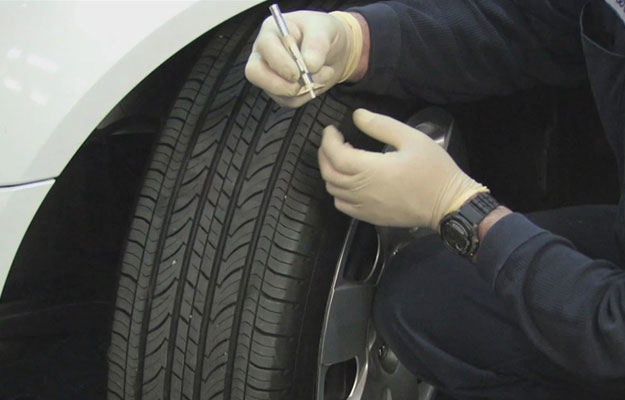 Keep these points in mind when measuring the remaining tread depth of used tires.
Keep these points in mind when measuring the remaining tread depth of used tires.
The quality of domestic roads, unfortunately, does not allow tires to be used for 7–10 years. If you still decide to buy a used kit, check the year of manufacture - it is better not to consider tires older than 8 years. nine0003
there is no guarantee for tires bought from hands;
the seller can cheat - for example, offer tires from different manufacturers in one set. Some especially enterprising salesmen even cut the tread on the worn rubber, as if the tires had not yet worn out;
you will have to spend a lot of time picking up tires from private sellers - much of what is put up for sale is only suitable for recycling; nine0003
Products may have hidden or visible defects. Visible are punctures, tears, cuts. A tire with a lot of damage can collapse in motion. Hidden defects include damage to the cord, which most often occurs after punctures or a strong blow.